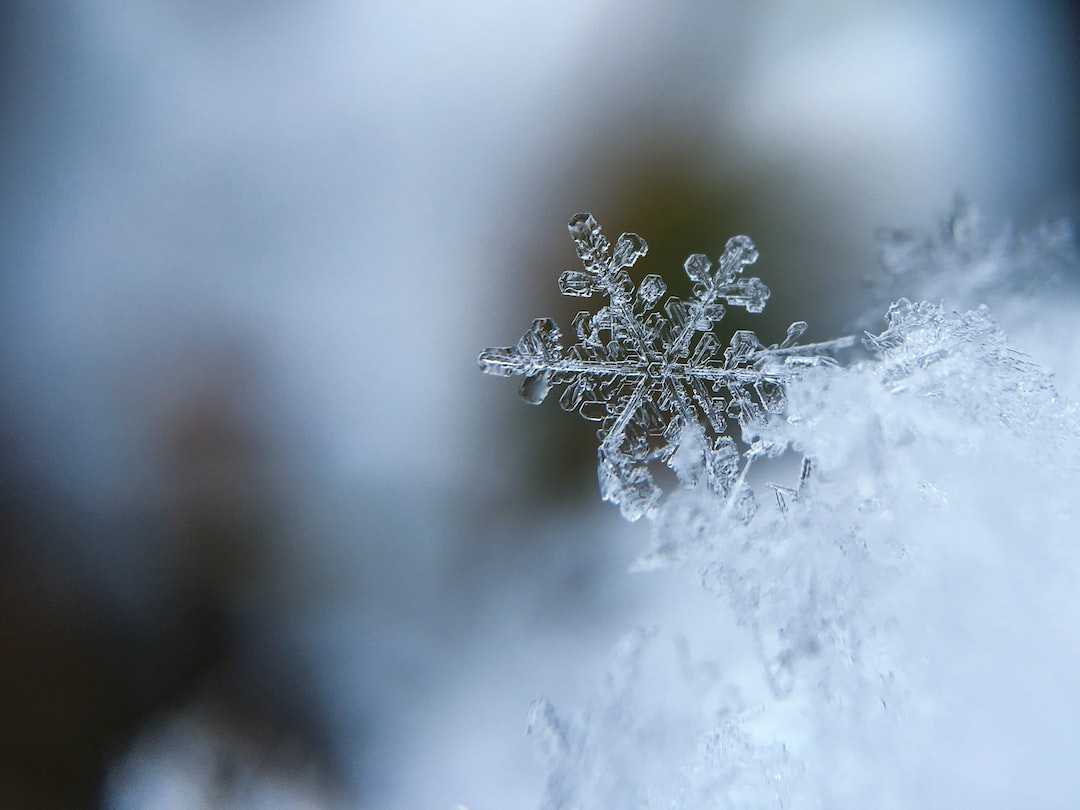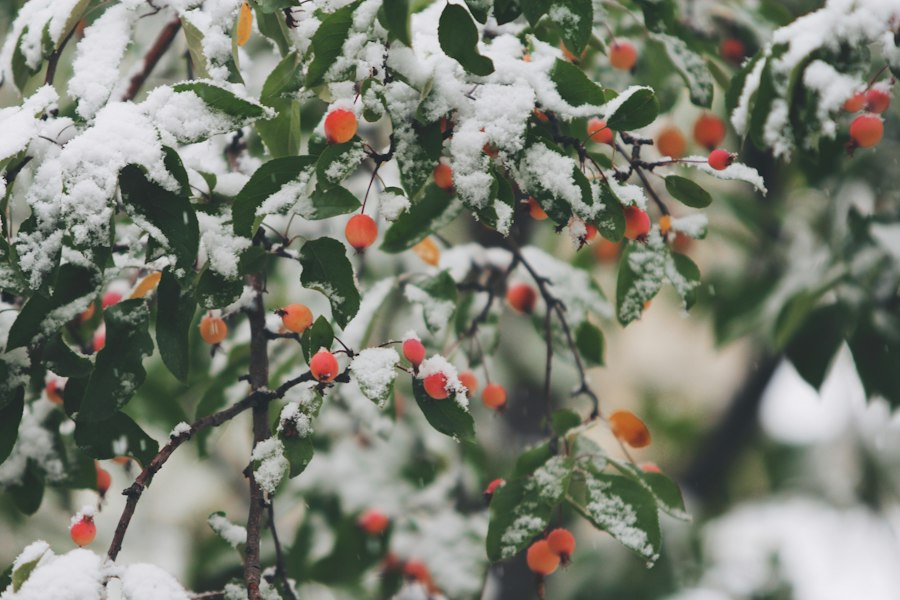Keeping Your Dahlia Tubers Safe and Sound: A Guide to Winter Storage

Dahlia tubers are an essential part of any gardener’s arsenal. These underground storage organs are responsible for producing the beautiful and vibrant dahlia flowers that we all love. However, in order to ensure the health and longevity of these tubers, it is crucial to properly store them during the winter months.
Winter storage is necessary for dahlia tubers because they are not frost-tolerant. If left in the ground during the cold winter months, the tubers can freeze and die. By digging up the tubers and storing them in a cool, dry place, you can protect them from freezing temperatures and ensure their survival for the next growing season.
Key Takeaways
- Dahlia tubers need to be prepared for winter storage to ensure healthy plants in the spring.
- Choosing the right storage containers is important to prevent damage and disease.
- Storing dahlia tubers in a cool, dry place is crucial to prevent rot and decay.
- Protecting dahlia tubers from frost and freezing temperatures is necessary to prevent damage.
- Inspecting dahlia tubers for signs of damage or disease and preventing pests and rodents from damaging them is important for successful winter storage.
Preparing Dahlia Tubers for Winter Storage
Before storing your dahlia tubers for the winter, it is important to properly prepare them. Start by digging up the tubers carefully to avoid damaging them. Use a garden fork or shovel to gently lift the tubers out of the ground, being careful not to pierce or cut them.
Once you have dug up the tubers, it is important to clean and dry them before storage. Use a soft brush or cloth to remove any excess soil from the tubers. Then, allow them to air dry in a cool, well-ventilated area for a few days. This will help prevent rot and mold during storage.
After cleaning and drying, it is recommended to trim the stems and roots of the tubers. Cut off any remaining foliage, leaving about an inch of stem attached to each tuber. Trim any long or damaged roots as well. This will help prevent rot and make it easier to store the tubers.
Choosing the Right Storage Containers for Dahlia Tubers
Choosing the right storage containers for your dahlia tubers is crucial for their survival during winter storage. There are several options available, each with its own pros and cons.
One option is to use plastic crates or bins with lids. These containers are sturdy and provide good protection for the tubers. However, they may not provide adequate ventilation, which can lead to mold or rot if the tubers are not completely dry.
Another option is to use paper bags or cardboard boxes. These containers allow for better air circulation, which can help prevent mold and rot. However, they may not provide as much protection against pests or rodents.
When choosing the size of your storage containers, it is important to consider the size of your tubers. You want to choose a container that allows for some air circulation around the tubers, but not so much space that they can move around and potentially get damaged. It is also a good idea to label each container with the variety of dahlia tuber it contains, as well as the date it was stored.
Storing Dahlia Tubers in a Cool, Dry Place
| Temperature | Humidity | Storage Time |
|---|---|---|
| 40-50°F | 50-60% | 6-8 months |
Once you have chosen the right storage containers for your dahlia tubers, it is important to find a cool, dry place to store them. The ideal temperature for dahlia tuber storage is around 40-50 degrees Fahrenheit (4-10 degrees Celsius). This will help prevent the tubers from freezing or rotting.
It is also important to maintain a low humidity level in the storage area. High humidity can lead to mold or rot, so it is best to store the tubers in a place with low humidity. If you live in a particularly humid climate, you may need to use a dehumidifier or place moisture-absorbing packets in the storage containers.
When choosing a storage location in your home or garden, it is important to consider factors such as temperature fluctuations and exposure to sunlight. Avoid storing the tubers near heaters or vents that could cause temperature fluctuations. Also, keep them away from direct sunlight, as this can cause the tubers to dry out.
Protecting Dahlia Tubers from Frost and Freezing Temperatures
In addition to finding a cool, dry place for storage, it is important to take steps to protect your dahlia tubers from frost and freezing temperatures. Even in a cool storage area, the tubers can still be damaged if exposed to freezing temperatures.
One way to prevent frost damage is to wrap the tubers in newspaper or place them in paper bags before storing them. This provides an extra layer of insulation and helps protect the tubers from freezing temperatures.
If you live in an area with freezing temperatures, you may need to take additional precautions. One option is to store the tubers in a basement or garage that stays above freezing. Another option is to bury the tubers in a bed of sand or peat moss in a protected area of your garden. This provides additional insulation and helps protect the tubers from freezing.
Inspecting Dahlia Tubers for Signs of Damage or Disease

Before storing your dahlia tubers for the winter, it is important to inspect them for signs of damage or disease. This will help prevent the spread of rot or disease during storage.
Start by checking each tuber for any soft spots or discoloration. Soft spots can be a sign of rot, while discoloration can indicate disease. If you find any damaged or diseased tubers, it is best to discard them to prevent the spread of rot or disease to healthy tubers.
It is also a good idea to inspect the stems and roots of the tubers. Look for any signs of damage or decay, such as blackened stems or mushy roots. If you find any damaged or decayed stems or roots, trim them off before storing the tubers.
Preventing Pests and Rodents from Damaging Dahlia Tubers
Pests and rodents can be a major threat to dahlia tubers during winter storage. Common pests that can damage tubers include mice, voles, and slugs. These pests can chew on the tubers, causing damage or even death.
To prevent infestations and protect your tubers, it is important to take steps to deter pests and rodents. One option is to place mothballs or cotton balls soaked in peppermint oil in the storage containers. The strong smell of these substances can help repel pests and rodents.
Another option is to use wire mesh or hardware cloth to cover the storage containers. This will prevent pests and rodents from accessing the tubers while still allowing for air circulation.
Replanting Dahlia Tubers in the Spring
Once winter is over and the danger of frost has passed, it is time to replant your dahlia tubers. Before planting, it is important to prepare the tubers for planting.
Start by inspecting each tuber for any signs of damage or disease. Discard any damaged or diseased tubers to prevent the spread of rot or disease to healthy tubers.
Next, soak the tubers in a bucket of water for a few hours before planting. This will help rehydrate the tubers and prepare them for planting.
When planting, choose a location with well-drained soil and full sun. Dig a hole that is large enough to accommodate the tuber and its roots. Place the tuber in the hole with the stem facing up, and cover it with soil. Water thoroughly after planting.
Tips for Successful Dahlia Tubers Winter Storage
To recap, here are some key tips and best practices for storing dahlia tubers during the winter:
– Dig up the tubers carefully to avoid damaging them.
– Clean and dry the tubers before storage to prevent rot.
– Trim the stems and roots of the tubers to prevent rot and make storage easier.
– Choose the right storage containers, considering ventilation and protection.
– Store the tubers in a cool, dry place with low humidity.
– Protect the tubers from frost and freezing temperatures.
– Inspect the tubers for signs of damage or disease before storage.
– Take steps to prevent pests and rodents from damaging the tubers.
– Prepare the tubers for planting in the spring by soaking them in water.
– Replant the tubers in a well-drained, sunny location.
In addition to these tips, here are some additional tips for ensuring healthy tubers and plants in the spring:
– Label each storage container with the variety of dahlia tuber it contains.
– Check on your stored tubers periodically to ensure they are still in good condition.
– If you notice any signs of rot or disease, remove the affected tubers immediately.
– Consider dividing your tubers every few years to promote healthy growth.
– Keep a record of your dahlia varieties and their performance each year to help with future planting decisions.
Proper Winter Storage is Key to Healthy Dahlia Plants
In conclusion, proper winter storage is crucial for the health and longevity of dahlia tubers. By following the tips and best practices outlined in this article, you can ensure that your tubers survive the winter and produce beautiful flowers in the spring. Remember to dig up the tubers carefully, clean and dry them before storage, choose the right containers, store them in a cool, dry place, protect them from frost and freezing temperatures, inspect them for damage or disease, prevent pests and rodents from damaging them, and prepare them for replanting in the spring. With proper care and attention, your dahlia tubers will thrive year after year.
If you’re wondering how to store dahlia tubers over winter, you’ll find some helpful tips in this article from Lawn World. They provide a comprehensive guide on how to properly store and care for your dahlia tubers during the colder months. From digging up the tubers to choosing the right storage location, this article covers it all. For more information, check out their website at https://www.lawnworld.com/sitemap.html.



